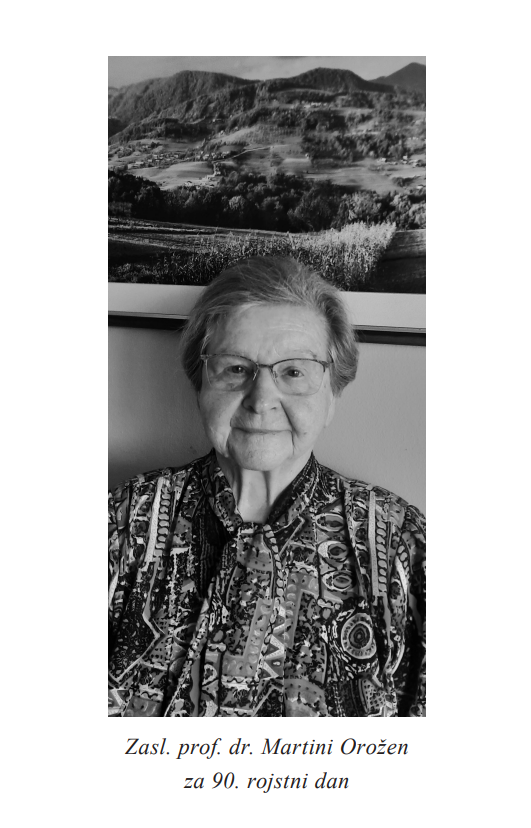»Zaprto« ali »odprto« pojmovanje zgodovine pri Joachimu Du Bellayju?
DOI:
https://doi.org/10.18690/scn.14.2.232–247.2021Ključne besede:
Joachim Du Bellay, Rimske ruševine, translatio studii/imperii, sermo humilis/pedestris, sermo sublimis, zgodovinaPovzetek
Zbirka Joachima Du Bellayja Rimske ruševine je pisana v visokem slogu, kar je za tega pesnika prej izjema kot pravilo. Na več mestih v drugih zbirkah sicer poudari, da je predvsem pesnik nizkega sloga in da visokega raje prepušča Ronsardu. Rimske ruševine predstavljajo Rim z več vidikov, po navadi v primerjavi z nečim drugim (na primer sedem čudes antičnega sveta pesnik primerja s sedmimi rimskimi griči). Vse te podrobnosti skupaj sestavljajo pravo »kratko zgodovino Rima«. Du Bellayja ne zanima zgodovina sama zase, temveč njen smisel. Njegova osnova bo krščanska, obilno bosta nanj vplivala tudi neoplatonizem in stoicizem, na koncu pa nam bo preostal uvid v eklektično mešanico zgodovine in njenega smisla, ki jo bo treba definirati.
Prenosi
Literatura
– –, 2019: Les Inventions de Du Bellay: Une promesse de conversion? Le lent brassement des livres, des rites et de la vie. Mélanges offerts à James Dauphiné (BAB 11). Paris: Champion, Honore Champions editions. 383–396.
Jacques BOREL, 1967: Du Bellay poète du retour, Critique 242 (juillet 1967). 619–630.
James DAUPHINÉ, 2019: Le lent brassement des livres, des rites et de la vie. Mélanges offerts à James Dauphiné (BAB 11). Paris: Champion, Honore Champions editions.
– –, 1995: Du Bellay, Antiquitez et nouveaux mondes dans les recueils romains. Le ‘style lent’ des Antiquitez. Nice: Association des publications de la Faculté de Lettres. 139–147.
Betty J. DAVIS, 1988: The Seven Wonders and the Seven Hills in Du Bellay’s. Les Antiquitez de Rome, Literary Onomastics Studies 15, Article 7, 22–29. Dostop 31. 8. 2021 na https://digitalcommons.brockport.edu/los/vol15/iss1/7/
Lucien FEBVRE, 1942: Le problème de l’incroyance au XVIe siècle. La religion de Rabelais. Pariz: Albin Michel.
– –, 1983: Une question mal posée: Les origines de la Réforme francaise et le problème des causes de la Réforme, Revue historique, 1929, repris dans Au cœur religieux du XVIe
siècle. Pariz: Livre Poche. 2e éd. 1983. 7–95.
Gilbert GADOFFRE, 1978: Du Bellay et le sacré. Paris: Gallimard.
Philip FORD, 1986: Du Bellay et le sonnet satirique, Le sonnet à la Renaissance des origines au XVIIe siècle. Paris: Aux Amateuirs livres. 205–214.
James FUJITANI, 2010: Stoicism and History in Joachim Du Bellay’s Antiquitez de Rome, Renaissance and Reformation / Renaissance et Réforme 33/2, 63–92.
Jean-Loup KASTLER, 2013: Du ‘problème de l’incroyance’ à ‘l’étrange liberté’. Un changement de paradigme de l’histoire des expériences religieuses? ThéoRèmes 5. Dostop 31. 8. 2021 na https://journals.openedition.org/theoremes/537
Torquato TASSO, 1587: Lettere poetiche.
Blaž VURNIK, 1993: Bartolomé de Las Casas. Uničevanje Indijancev in evangelizacija. Celje: Mohorjeva družba.
Henri WEBER, 1994: La Création poétique au XVIe siècle en France: de Maurice Scève à Agrippa d’Aubigné. Paris: Nizet.
Prenosi
Objavljeno
Številka
Rubrika
Licenca
Avtorske pravice (c) 2021 Univerzitetna založba Univerze v Mariboru

To delo je licencirano pod Creative Commons Priznanje avtorstva-Nekomercialno 4.0 mednarodno licenco.
Avtorske pravice
Članki so objavljeni pod pogoji mednarodne licence CC BY-SA. https://creativecommons.org/licenses/by-sa/4.0/deed.sl
Plagiatorstvo
Slavia Centralis je nekomercialna in prosto dostopna mednarodna znanstvena revija. Kot taka je zavezana etičnim načelom glede zaupnosti, izvirnosti in intelektualne poštenosti. Kršenje avtorskih pravic in plagiatorstvo obravnava zelo resno, zaradi česar z ustrezno programsko opremo preverja morebitno podobnost z vsebino drugih besedil.
Avtorji morajo upoštevati naslednje:
Predloženo besedilo mora biti izvirni znanstveni članek. Vsi viri morajo biti korektno navedeni. Besedilo ne sme biti istočasno predloženo uredniški presoji drugih publikacij.
Za vključeno gradivo (citati, ilustracije, tabele ipd.) je treba pridobiti ustrezna dovoljenja, ki izhajajo iz avtorskih pravic.
Objava v reviji Slavia Centralis ne predvideva plačila.
